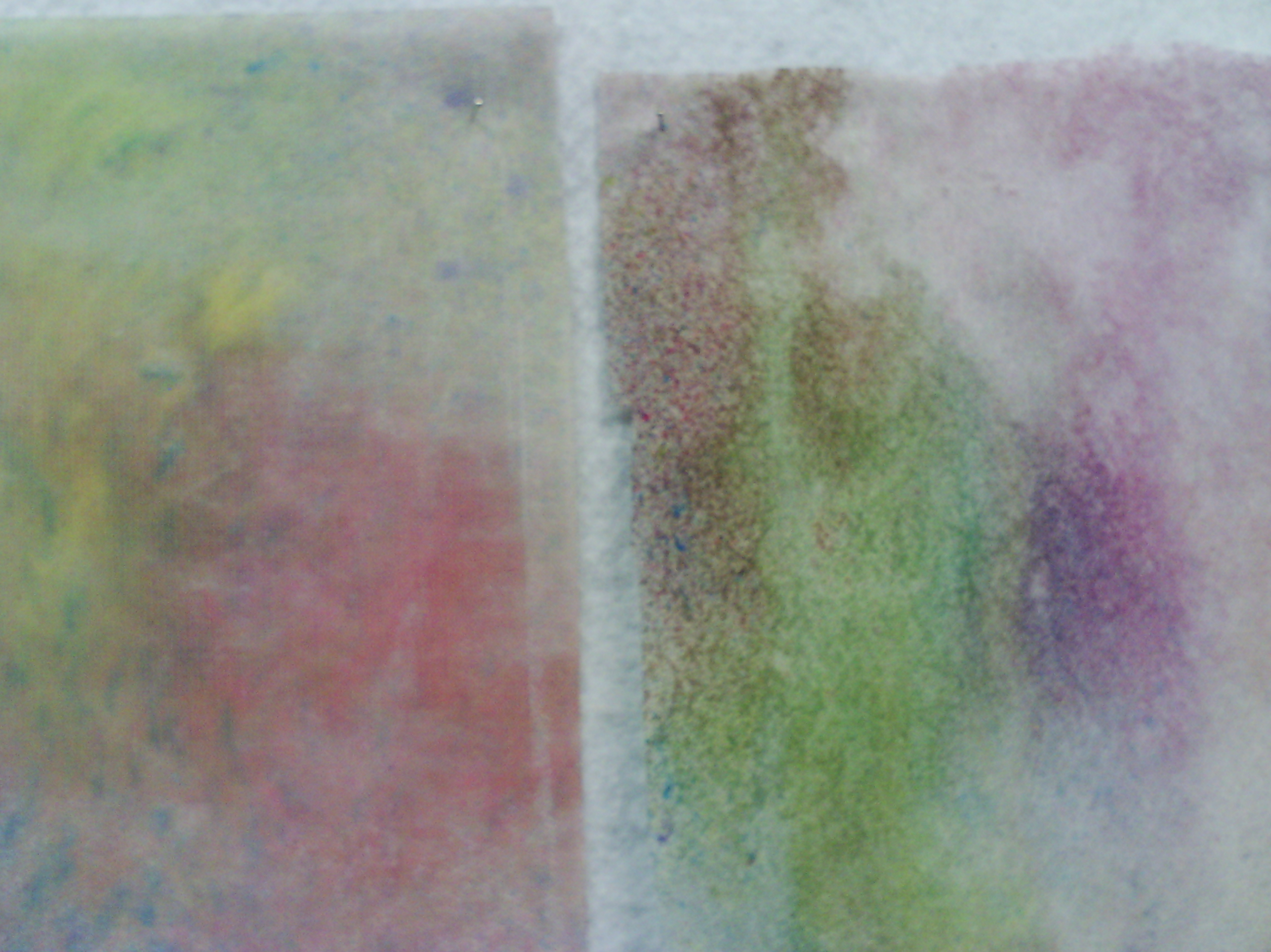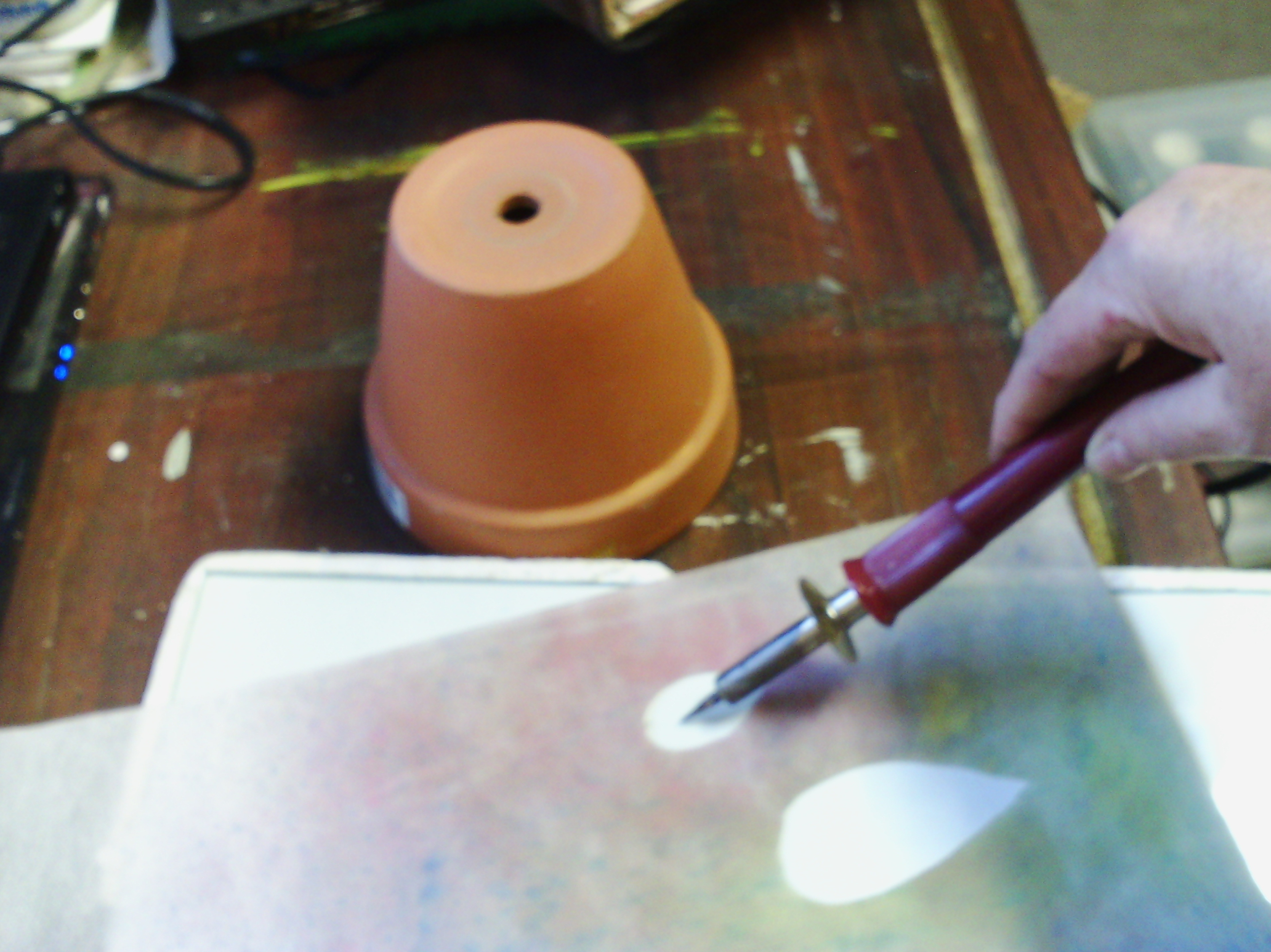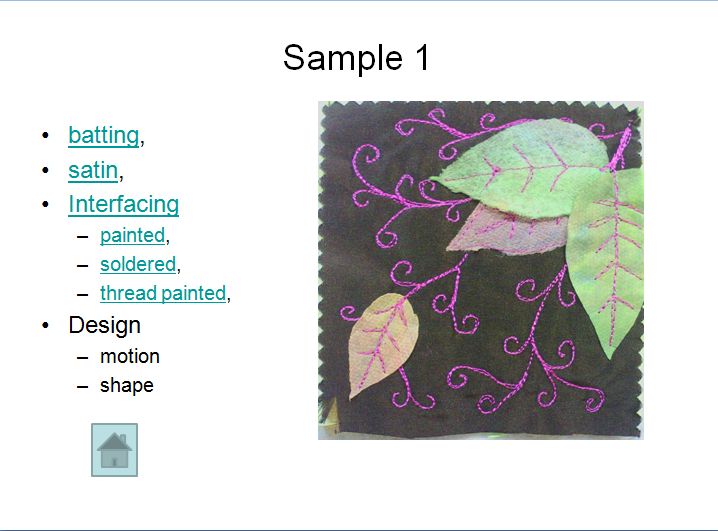Here is my latest one.
I picked the techniques I wanted to use before I started, but of course I always change my mind. I had intended to use batting as the foundation and cotton for the first layer, but I found this piece of very dark brown, almost black satin and used that instead.
I got a couple of pieces of interfacing (don't ask what type as I get these from the recyclers and there are no labels. They are synthetic, I know that much) one was more like a lutradur and one was smoother. I sprayed them with fabric paint and let them dry.
Then I cut a few leaf shapes out with my heat tool. They cut very cleanly this way. I could of course have used scissors since the fabrics wouldn't fray, but hey I wanted to be different.
I arranged my leaves on the background. I decided to put the purple one in the centre at the top instead. I made it up as I went along, because this was not the design I had originally intended. What I had originally intended was to cut out a wavy shape with little curly bits.
I started by attaching the two warm coloured leaves with free motion. I did the top one first and went all the way around the outside, but when I had put the veins in the small one, I decided I liked it being dimensional with the edges unattached.
Then I added the two green leaves over the first one. I decided I liked the one that went over the edge of the piece. I did think about chopping it off, but decided it was nice the way it was.
I had a little think about the composition and read through my initial notes. I had wanted to use shape and motion as my design elements. I had the shape, but not the motion, so I went back and did a little more thread sketching.
Now, It had motion! It also was close to my favourite split complementary colour scheme, which I had not really planned, but it just goes to show doesn't it?
And this is how it looks in my database, with links back to the information for each part.
Of course, I still need to do the edges. i have some black organza ribbon to bind it. That's a TV watching job!
Create every day.
























